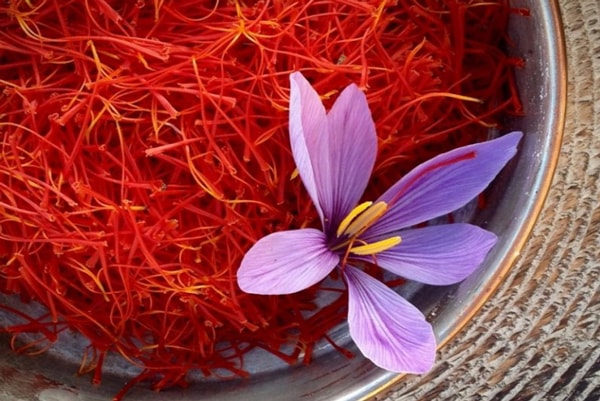
- by somaye
- Saffron / useful article
- October 30, 2022
- Post Views: 1,855
- 0
One of the concerns we should be aware of while buying saffron is recognizing the genuine article.
Saffron consumers can use the methods for recognizing the original saffron to raise their knowledge and cut off a source of profit for saffron market traders due to the recent rise in saffron fraud in the manufacture and selling of saffron.
The crimson gold that is saffron is used by people all around the world for its flavor and aroma.
Saffron has such potent medicinal and therapeutic effects that anyone looking to make a profit consider manufacturing low-quality saffron using a variety of techniques.
However, there are several ways to distinguish genuine saffron from fake.
For this reason, we will look at how to tell the difference between original saffron and saffron of good grade in this post.
Original saffron
In modern laboratories, it is simple to determine if saffron is pure or not, but it can be difficult for customers to do so.
Fake saffron can also be made by adding oil, honey, salt, sugar, or even powdered saffron to the product in order to increase its weight. This is because saffron is a highly valued plant, and every gram counts.
Due to its high market price, it attracts profiteers who will use any means at their disposal to give customers less high-quality saffron.
How to recognize authentic saffron
Different people can distinguish between high-quality and authentic saffron using a variety of cues, including flavor, taste, color, and appearance.
In the following, we mention some methods to identify the original saffron
Identifying high-quality and original saffron by appearance
One of the most crucial characteristics for distinguishing the original saffron is its trumpet-shaped strands, which are visible if you examine the saffron flower strands more carefully.
In such a way that the bottom of the plant is rod-shaped and its end is toothed, wide and scissor-shaped. Also, the color of saffron should be intense red, not bright, and the shape of its stigmas should not be shiny.
Identifying high-quality and original saffron by smell, taste and color
Taste it; authentic saffron has a bitter flavor and should not taste sweet. This is one technique to identify authentic saffron.
Be cautious to pay attention to this since if it tastes sweet, it was probably sprayed with sugary chemicals like sugar water to make it heavier.
Saffron natural hue is dark. Saffron dark tint has sometimes led people to believe that it is ancient or of low quality, but this is not the case at all. It is important to notice that saffron initial color is dark rather than light.
It is obvious that the saffron is fake if it has a color other than dark crimson or one that is uncommon when compared to the real thing.
It should be noted that real saffron takes longer to turn colored than imitation saffron, and that people can tell the difference by putting it in cold water.
Additionally, genuine saffron has a spicy, pleasing aroma, while imitation saffron has none.
Rub saffron between your fingers
Put saffron in cold water and after a short while, take the saffron out and rub it between your fingers for a short while.
The fine strands of saffron you are holding between your fingers won’t separate if the product you purchased is authentic.
However, fake saffron are easily detected because they soon convert to powder.
Saffron in cold water
Fill a glass bowl or cup with cold water and put some saffron threads in the water. The saffron strands start to spread color in the water. Pure saffron takes 10 to 15 minutes to fully release its color, however imitation saffron that has had color added does so right away.
Additionally, pure saffron threads should release a bright yellow or orange color that becomes slightly more intense as the concentration increases. On the other hand, if you see crimson or dark red color in the water, there is a possibility that the color of saffron has changed. It would be prudent in this situation to avoid using the product because it might include dangerous chemicals and dyes.
Finally, it’s vital to note that fake saffron quickly becomes white, whereas real saffron retains its red hue when the color of the water changes. This is a key distinction in the process of detecting the authentic saffron.
The last point for buying saffron
Above, we mentioned the methods of how to distinguish the original saffron from fake. Another way that can ease your mind about the authenticity of the product is to buy from reputable brands.
These brands do not compromise their credibility by selling fake products and it is easy to trust them.





